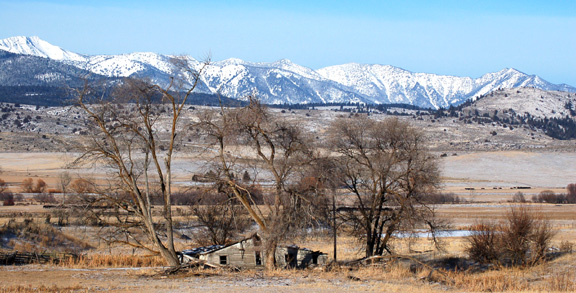

[Before diving into the untold stories and various complaints, I thought it might be best to give a little background information about what North East Oregon looks like to an outsider, this one in particular.]
Refugee in Oregon, Neo-Feudalism, the Timber Industry and Wonderful Winnie Weller Smith
There is an old saying that went around among my college friends back in the late ’60’s that went like this: “Wherever you go, there you’ll be.” It was a reminder that we bring much to our encounters with the world around us and the people in it, and that even if we head out for greener pastures, our experience there will be greatly affected by the baggage we carry around with us, both good and bad. To me the aphorism lacked balance and seemed to place too much responsibility on the individual, so I responded with “Yes, and wherever you go, there they’ll be too!” People’s reaction to you depends as much upon their baggage as it does yours, and vice-versa.
When I left California nearly 8 years ago, I first landed in Prairie City, Grant County, Oregon. To paraphrase historian Hubert Howe Bancroft’s statement of his feelings about his first visit to Utah in the 1800’s, I thought I had left America and entered a foreign country. Well not exactly, but the place did and still does have sort of a neo-feudal feel to it. Timber barons and cattle ranchers still pretty much run the place, i.e., Grant County, and they would kind of like to keep it that way despite the realities that point in a new direction. It is a place stubbornly mired in its refusal to embrace the changes brought on by the unsustainable exploitation of publicly owned forest resources for over a hundred year period. Many there refuse to face the truth that was so simply put by my late Prairie City neighbor, and dear friend, Winnie Smith. She was a wise and kind-hearted woman who grew up in the lumber camps of Idaho and Oregon during the timber heyday of the last century. One day while she was showing me pictures of logs at least as big around as an S-10 Blazer, Winnie told me the truth that was obvious to anybody on the outside looking in, but which was not so clearly seen or admitted by those who were heavily invested in an unsustainably managed and changing industry. Winnie told me that the reason the timber industry is failing is that they had already cut down most of the big old trees in the Blue Mountains and that the ponderosa pines here in droughty Eastern Oregon grow about as fast as a lichen on a rock.
I’ll leave the rest of the Grant County tales for another day, but my relationships there were generally not enhanced by the fact that I was, and still am to some degree, an environmental activist working on grazing issues in a place where there are far more cows than people.
Above, or nearby, assuming I can figure out away to get them on here, are some pictures of what life was like for my friend Winnie (photo circa 1944), including those big old logs hinting at what the forest used to look like.
Chris












No comments:
Post a Comment